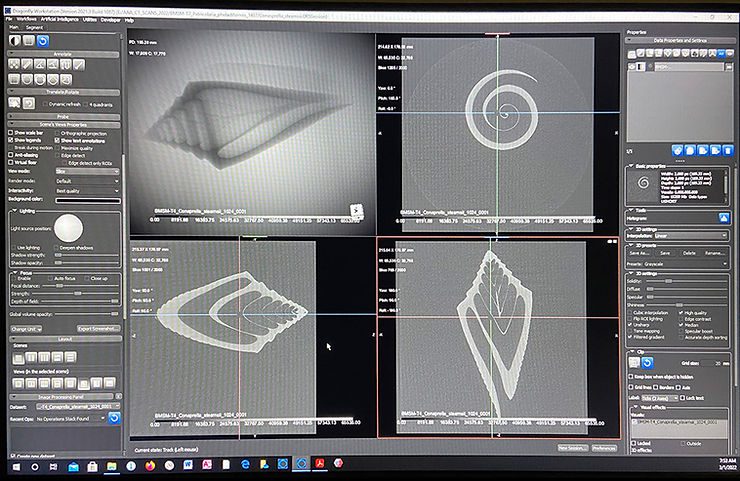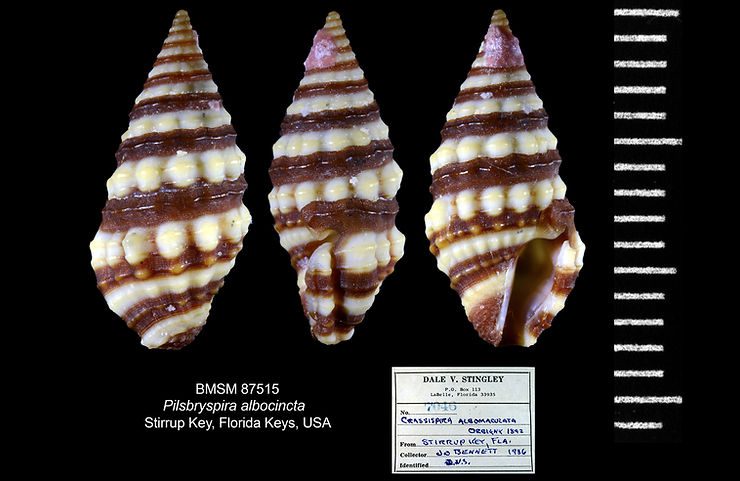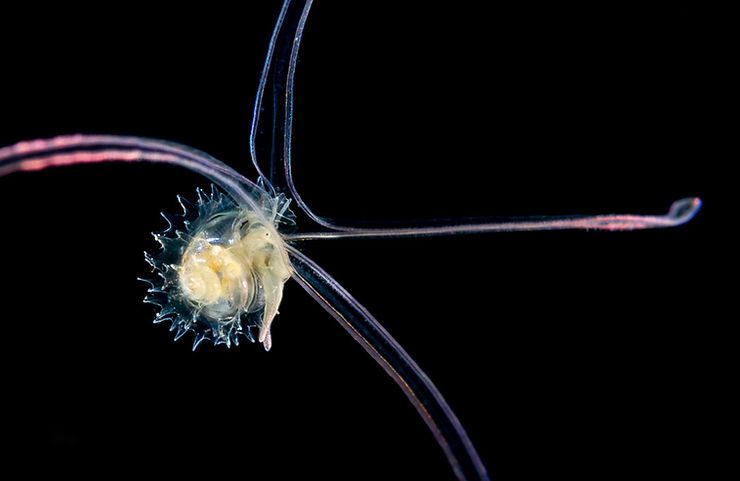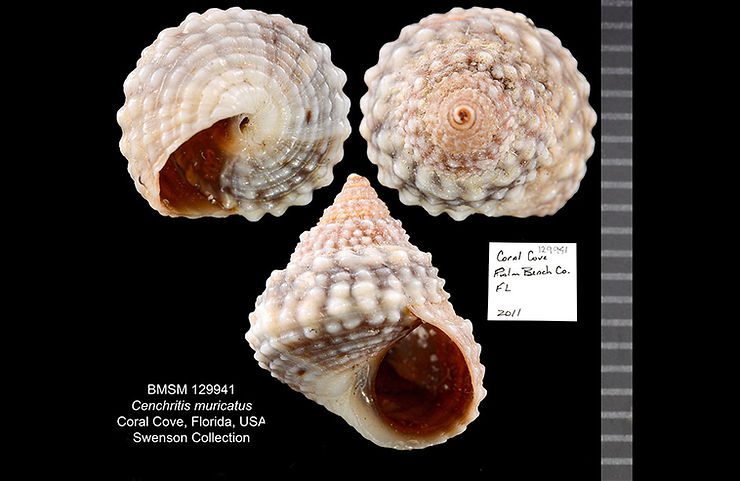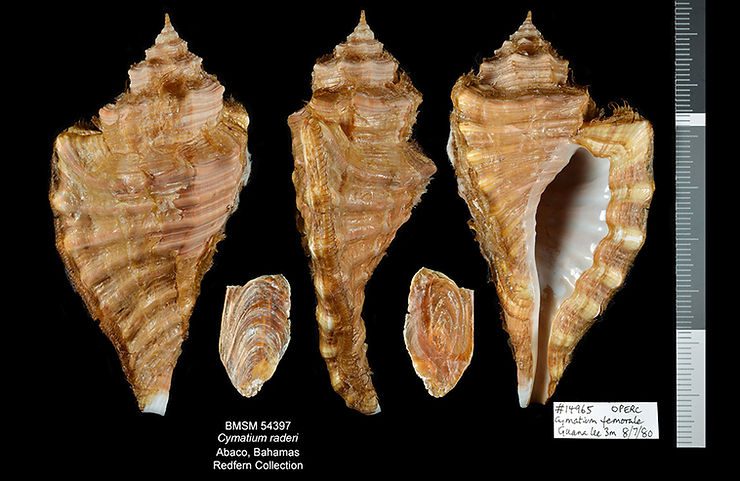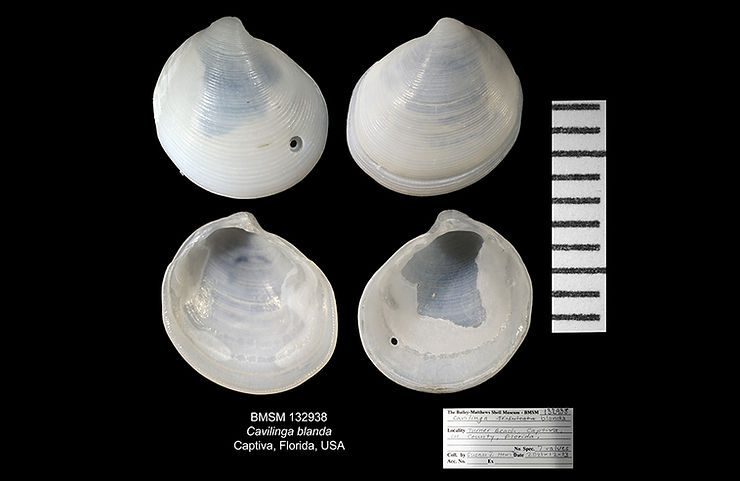
Shell of the Week: The Three-ridge Lucine
Cavilinga blanda (Dall, 1901), is one of the smallest lucines one can find on the beaches of Southwest Florida. Its whitish shell is oblique-oval and “taller” than “wide”, with a fine sculpture of commarginal (“concentric”) lines. The left valve (detail below) exhibits a small (about 0.7 mm, or 0.03 inch) drill hole, probably done by a moon snail (family Naticidae). The neat, smooth-sided drill hole penetrated the external (whiter color), then the internal (grayish color) shell layers.
